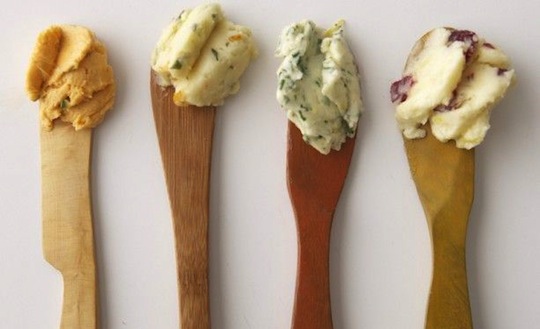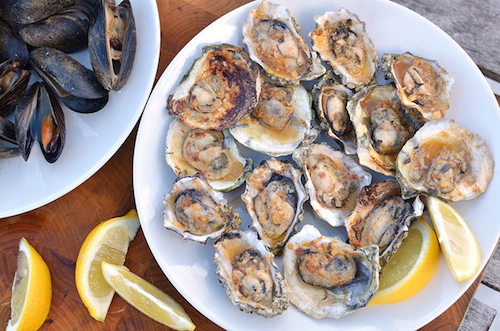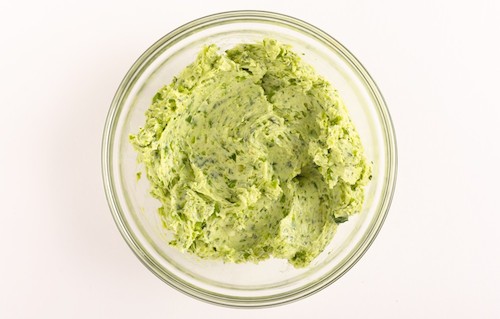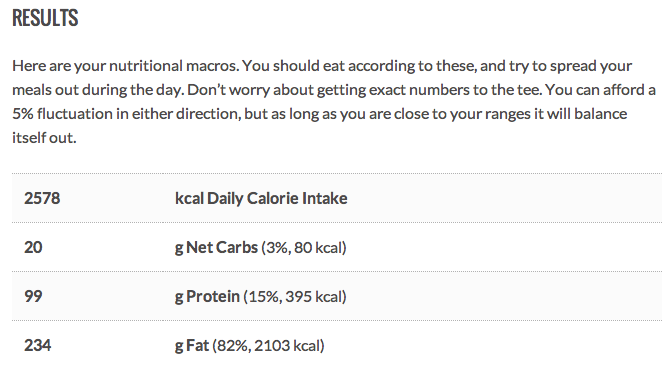Why Losing Fat and Gaining Muscle is Tricky
There’s a good reason why many people believe wholeheartedly in the old bodybuilding adage that you can’t build muscle while cutting fat, and must deal with getting fat if you want to build any real muscle.
Building muscle while burning fat–achieving a “body recomp” as it’s called–doesn’t come with haphazard effort. It requires that you do a bunch of little things right, with both your diet and training.
Why is that, though? What is the physiological barrier that we’re running up against?
Well, I’ve answered this in other articles, but I’m going to give a summary here in case you missed them.
The problem we must overcome to build muscle while we burn fat has to do with something called protein synthesis. To quote my previous article on muscle recovery:
“Every day, our muscle cells go through a natural process whereby degraded cells are eliminated, and new cells are created to take their place. This process is known as ‘protein biosynthesis,’ or ‘protein synthesis.’
“Under normal health and dietary circumstances, muscle tissue is fairly stable, and the cycle of cellular degradation and regeneration remains balanced. That is, the average person doesn’t lose or gain muscle at an accelerated rate–his or her lean mass more or less remains level. (Well, we actually slowly lose lean mass as we age, but you get the point.)
“When we engage in resistance training, we damage the cells in our muscle fibers, and this signals the body to accelerate the normal rate of protein synthesis to repair the large amount of damaged cells.
“Our body is smart about it, too.
“It doesn’t want to just repair the muscle fiber to its previous state–it wants to adapt it to better deal with the type of stimulus that caused the damage. That is, it wants to add cells to the muscle fibers, which makes them bigger and stronger.
“Thus, what we think of as just “muscle growth” is actually the result of protein synthesis rates exceeding protein breakdown rates. At the end of, let’s say, every 24-hour period, if your body synthesized more muscle proteins than it lost, you gained muscle. If it didn’t, you didn’t.”
Now, let’s apply that knowledge to the issue at hand.
In order to lose fat, you need to give your body less energy (food) than it burns every day.This is known is creating a “calorie deficit.”
No calorie deficit, no losing fat, period.
There are physiological changes other than fat loss that occur when you do this though. The two primary negative effects are:
That is, a calorie deficit reduces your body’s ability to properly repair the damage you cause to your muscles through exercise (to build its muscles bigger and stronger).
So, now that you have a better understanding of the problem, let’s talk about what it takes to overcome it.
How to Build Muscle and Burn Fat at the Same Time
Just because your body can lose fat while building muscle doesn’t mean it comes easily.
The first thing you should know is that even when you do it right, muscle growth during a body recomp is slower than muscle growth during a proper “bulk.” As covered earlier, you are fighting an uphill battle in terms of protein synthesis, no matter how you cut it.
So be patient when you strive to build muscle and burn fat. Wild claims on the Internet about losing double-digit amounts of body fat and gaining the same in muscle are either lies, or involved the use of various drugs.
Based on my experience, here are the key points for effectively gaining muscle and losing fat:
Follow a set meal plan that keeps you in a moderate calorie deficit.
The more you restrict your calories, the more protein synthesis is inhibited.
Thus, it’s very important that you don’t try to rush your diet by putting yourself in a large (greater than 20%) daily calorie deficit.
I give a very simple formula for weight loss in my books that results in about a 20% daily caloric deficit if you’re exercising 4-6 hours per week:
- 1.2 grams of protein per pound of body weight, per day
- 1 gram of carbohydrate per pound of body weight, per day
- .2 grams of fat per pound of body weight, per day
This gives you a good starting point, and you can adjust up or down as needed
Oh and in case you’re worried that eating that many carbs per day will prevent you from losing weight, rest easy–eating carbs does not inhibit weight loss. In fact, keeping your carbs moderate/high is an important part of building muscle while losing fat, mainly because ithelps preserve your strength in the gym, and the insulin your body produces to process the carbs helps prevent protein breakdown.
So, once you have your daily numbers, the next step is to create a meal plan–an exact list of foods you can eat every day to hit those numbers.
The easiest way to do this is to open Excel and www.calorieking.com, and start piecing together meals using foods that you like.
Play with meal frequency and add and subtract foods as desired until you have a daily eating schedule that fits your schedule, lifestyle, and nutritional targets.
Then just follow that plan every day, throw in a cheat meal once per week where you eat more or less whatever you want, and you’re good to go.
With proper dieting, you’re looking to lose 1 – 2 lbs of fat per week, you should never feel starved, and you should stay strong in the gym.
Focus on heavy, compound weightlifting.
The oft-repeated advice to focus on high-rep workouts to really “shred up” is idiotic.
Getting that coveted “shredded” look is only a matter of getting your body fat low enough. One style of lifting will not make you look “more shredded” than another.
As you may have already realized, to build muscle while losing fat, you simply want to do what works best for inducing muscle growth:
Focus on heavy (4-6 or 5-8 rep range), compound movements like the squat, deadlift, bench press, and military press, and train with a moderate workout volume (9-12 heavy sets per workout).
Some people might scoff at this advice and talk about the important of the “hypertrophy” rep range of 10-12, and I address this in my definitive guide to muscle growth, and in my book Bigger Leaner Stronger.
The big “secret” behind the high-rep, high-volume workouts espoused by many fitness models and bodybuilders is…drugs. It’s really that simple.
Working in the 12 – 15 rep range for 2 – 3 hours per day is GREAT if you’re chemically enhanced because your body can actually repair all that damage. It just can’t if you’re natural though.
Do HIIT cardio.
High-intensity interval training (HIIT) is really all you should be doing if you want to maximize muscle growth while losing fat.
Why?
For two primary reasons:
- HIIT burns more fat per minute than steady-state cardio.
This has been proven again, again, and again–it’s finally just an indisputable fact.
A study conducted by The University of Western Ontario gives us insight into how much more effective it really is, as well. Researchers had 10 men and 10 women train 3 times per week, with one group doing 4-6 30-second treadmill sprints (with 4-6 minutes of rest in between each), and the other group doing 30-60 minutes of steady-state cardio (running on the treadmill at the “magical fat loss zone” of 65% VO2 max).
The results: After 6 weeks of training, the subjects doing the intervals had lost more fat. Yes, 4-6 30-second sprints burns more fat than 60 minutes of incline treadmill walking.
- HIIT preserves more muscle than steady-state cardio.
Because of the hindered protein synthesis rates, preserving muscle is particularly important when you’re trying to build muscle while losing fat.
One of the ways HIIT does this relates to growth hormone production. Research has shown that HIIT spikes GH levels higher than steady-state cardio does, and growth hormone is a powerful muscle preserver.
Furthermore, research has shown that the longer your cardio sessions are, the more they impair strength and hypertrophy. That is, the shorter your cardio sessions are, the more muscle you preserve.
Thus, I recommend no more than 20-30 minutes of HIIT per session, and no more than 3-4 sessions per week. This cardio schedule will provide you with a large boost in fat loss while minimizing muscle loss.
Get enough sleep.
Not getting enough sleep hurts both aspects of your efforts to build muscle and lose fat.
Sleep needs vary from individual to individual, but according to the National Sleep Foundation, adults need 7–9 hours of sleep per night to avoid the negative effects of sleep deprivation.
Supplements to consider taking.
I saved this for last because it’s the least important, but it is worth mentioning.
I’ll keep it short and simple. Here are the supplement you should consider taking:
http://www.muscleforlife.com/build-muscle-lose-fat/
The Right Amounts
One of the single, most imperative principles in this plan is to eat the right amounts of macronutrients (protein, carbohydrates and fats). By manipulating these foods and staying strict with the guidelines your goals will soon be in range. Diet is so important that without adhering to these principles you will surely never reach your physique goals.
Protein: As the main source for building muscle, protein is absolutely necessary for your muscle-building strategy. Take in around 1 to 1.5 grams of protein per pound of bodyweight (this equates to 180-270 grams for a 180 pound individual). This will guarantee that your muscles will be getting the correct dose of amino acids for maintaining and building muscle tissue. Some prime sources are chicken, lean steak, fish, turkey, ground meat, eggs, cottage cheese, Greek yogurt and protein powders.
Carbohydrates: Carbohydrate is a great muscle-sparing energy source. This particular macronutrient will be drastically manipulated as the diet plan goes along and will play a major roll in its success so be extremely mindful of your intake on a daily basis. Be sure to have an intake mainly of complex carbohydrates and fiber. Sources include brown rice, wild rice, sweet potatoes, whole wheat bread, wheat pasta, vegetables, some fruits and Ezekiel products.
Fats: Never count out a healthy fat. Certain fats are essential regarding maintaining hormones such as testosterone, increasing fat burning and aiding energy levels. Healthy fats will be utilized to replace carbohydrate on certain days to keep blood sugar levels steady and help with satiety. Good sources include avocado, walnuts, almonds, olive oil, natural peanut butter, some egg yolks and sunflower seeds.
Light the Furnace!
Now let’s look at how we can implement these macronutrients and manipulate them in such a way as to build more strength and mass while torching our fat stores. Protein levels will stay somewhat the same throughout the plan. You need that steady stream of amino acids to feed to the muscles for recuperation and repair to take place. Try out one gram per pound of bodyweight and assess your progress. If you find yourself stalling, try to up it to 1.25 or 1.5 grams per pound and then reassess. That is about as high as you will want to go with protein – the rest is up to carbohydrate and fat manipulation. Give each change in protein amount about four weeks before reassessing.
Here is the tricky part. Now you will start to manipulate carbohydrate in such a way as to trick the body into delving into its fat stores for fuel. You will have high, medium and low consumption days. You will eat low carbs for two to four days followed by medium and high days. On the low days your body will burn fat for fuel and save muscle so as long as your protein intake is high enough. Before you starve your body of energy after so many days of low carbs (which if prolonged could lead to lower testosterone levels and metabolism) you will have a day of moderate carbs and another day of high carbs.
This will shuttle in fuel to the muscle, rev back up your metabolism and be burned without storing body fat. Carbohydrate intake will be approximately .5 grams per pound of bodyweight for low days (90 grams for a 180 pounder), 1.5 grams per pound on medium days (270 grams) and 2.25 grams per pound on high days (405 grams).
Fat intake should hover around .25 grams per pound of bodyweight or 20-30% of total calories. However, on low carbohydrate days it would be wise to increase your healthy fat intake slightly. This will ensure your hormone levels will stay steady and will supply you with ample energy for your grueling workouts. On the low carb days simply increase your fat intake by 50%. Remember that one gram of fat has over twice the amount of calories of carbs, so a little goes a long way. For example, if you had half of an avocado on a salad, now on low carb days you will eat 3/4 of an avocado.
http://www.bodybuilding.com/fun/build-muscle-burn-fat-simultaneously.htm
Never Eat Carbs by Themselves
When attempting to lose bodyfat, insulin control is crucial. The total amount of insulin released by the body isn’t related to just how many carbohydrates you eat but how fast those carbs are digested. Refined carbs digest quickly, raising insulin levels substantially, which is why you should avoid them. But if you do happen to eat, say, a bowl of cold cereal (typically a fast-digesting carb), you can still take measures to ensure those carbs digest more slowly. This will cause less insulin to be released and therefore have less of an impact on your ability to burn fat.
Do This: One way to slow digestion is to eat carbs with protein and small amounts of fat. Never eat carbs alone. Accompany that bowl of cereal, for example, with scrambled egg whites or cottage cheese. Alternatively, you could eat plenty of vegetables, such as broccoli, cauliflower, green beans and green salads, with your meals. These foods actually slow the breakdown and digestion rate of all carbohydrates.
Never Eat Carbs Before Bed
Once again, it’s about hormones. At night your insulin sensitivity decreases, meaning your body must release more insulin than usual to put any carbohydrates you eat at night to use in the body. And by now you know that higher insulin levels can decrease fat-burning and enhance fat storage. In addition, the body naturally produces a fat-liberating hormone called growth hormone (GH) within the initial 90 minutes of sleep.
GH not only increases fat-burning but is required to build mass and strengthen the immune system. Yet carbs put a damper on GH release, so it’s ideal to go to bed under one of two scenarios: on an empty stomach or, even better, having consumed only protein, no carbs. This allows blood glucose – the high-tech name for digested carbs circulating in the blood – to remain low, which facilitates the rise in nocturnal GH production.
Do This: Don’t eat anything about three hours before bed. A better option is to eat only protein meals the final four hours before bed, with one protein meal immediately before bedtime that includes only protein, such as a casein shake, low-fat cottage cheese or chicken breast. You can, however, eat a small serving of vegetables here if you wish.
Use Nitric Oxide at Night
Nitric oxide (no) is the compound that opens everything up and, not surprisingly, it’s one of the best fat-burning products on the market. NO supports “the pump” when taken before training, enhancing blood flow to muscles by allowing more blood to make its way to tissues, including muscles, which can help maximize hypertrophy and boost metabolism. This arginine-based supplement is also effective when taken before bed, when it can exert a profound surge in GH levels and support fat-burning.
Do This: Within 30-60 minutes of bedtime every night, take a 5-10-gram dose of a nitric-oxide supplement that doesn’t contain caffeine on an empty stomach.





































